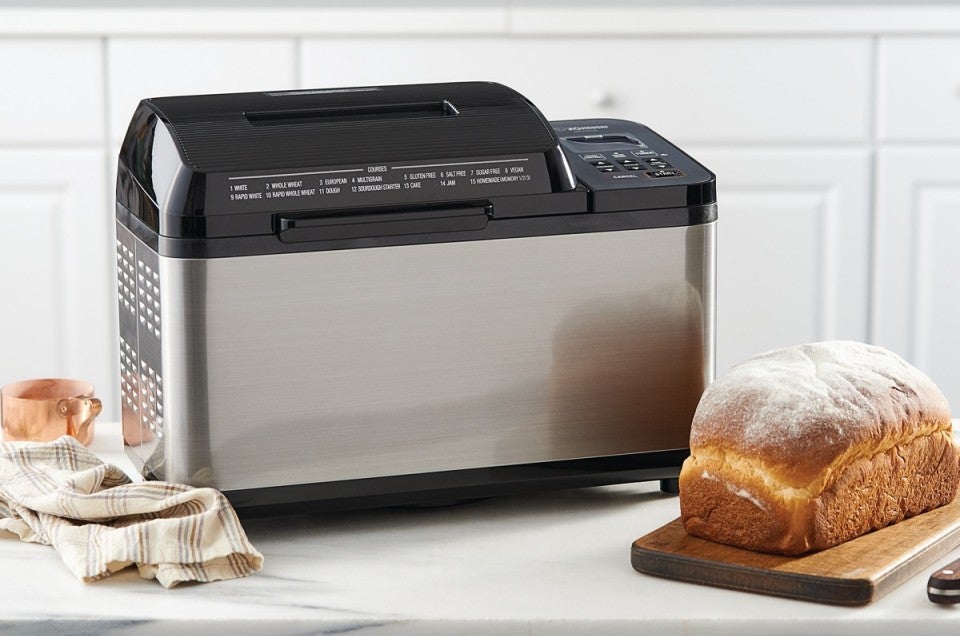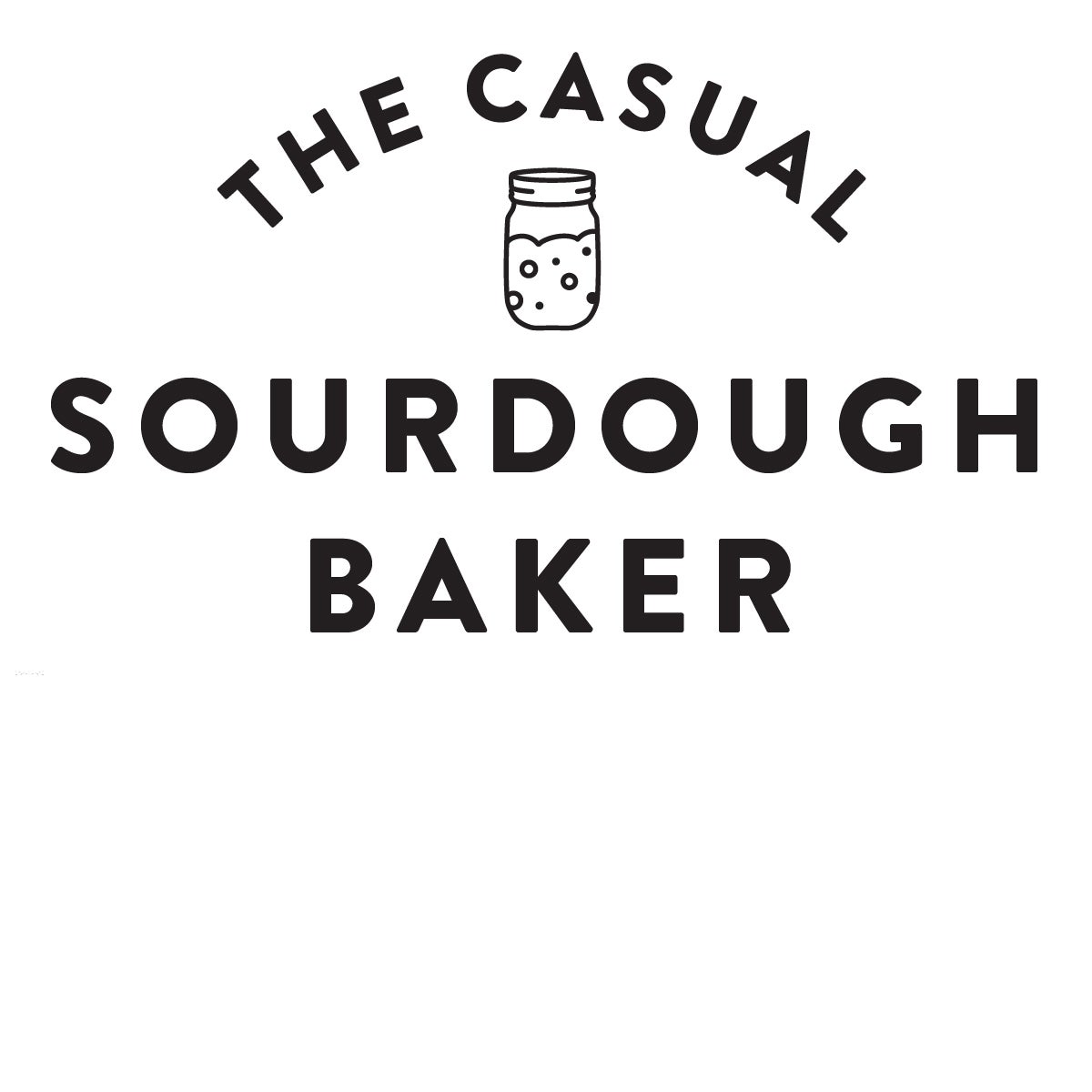How to use a bread machine for sourdough
From sourdough bagels to crusty baguettes, your machine's not just for sandwich loaves


 Love sourdough, but looking for a bit more flexibility and ease when you bake with a starter? In The Casual Sourdough Baker, PJ shows you just how wonderfully stress-free sourdough baking can be, from simple but richly flavored loaves to countless easy ways to use your discard. If you're just beginning your journey, our Sourdough Baking Guide lays out the basics you need for success — whether you decide to become serious or go casual!
Love sourdough, but looking for a bit more flexibility and ease when you bake with a starter? In The Casual Sourdough Baker, PJ shows you just how wonderfully stress-free sourdough baking can be, from simple but richly flavored loaves to countless easy ways to use your discard. If you're just beginning your journey, our Sourdough Baking Guide lays out the basics you need for success — whether you decide to become serious or go casual!
* * *
What do you get when you combine one of the oldest-known breads in the history of humankind (sourdough) with one of the newest technologies in yeast baking (the bread machine)?
A surprisingly happy friendship!
Maybe you’re a devoted bread machine baker who despairs of making a decent loaf of sourdough in your machine. Or perhaps you’re a sourdough purist who thinks a bread machine is only for yeasted loaves. Either way, let me show you how to use your bread machine to make wonderful sourdough bread: anything from crusty, flavorful baguettes to bagels to a high-rising sandwich loaf.
First, the tough news: You’ll never bake an ultra-crusty artisan boule or other shaped loaf in your bread machine. The machine makes a standard rectangular sandwich loaf. Period.
Because of its low baking temperature (hovering at 300°F or just below) and small interior, the loaf undergoes a kind of yeast-bread braise as it bakes. Steam trapped by the baking bread helps it rise nice and high; but the bread won’t develop a deliciously crisp crust, which requires high oven heat and a dry (not steamy) oven at the finish. In addition, you typically can't bake a recipe that's entirely naturally leavened, as a loaf that only relies on starter for leavening won't have long enough to rise using your bread machine's preset cycles. Look for a recipe that includes both starter and commercial yeast.
Now the good news: You can use your bread machine to help make any kind of sourdough bread you like; you just have to understand its functions and then choose which one(s) to use for various steps in the baking process.
Bottom line, your machine is a mixer, climate-controlled proof box, and small oven. If it’s programmable (as so many are these days), you can use your machine to perform one, two, or all three of its basic functions in pursuit of your ideal loaf.
Before we talk about bread, let’s see how your bread machine can help you feed your sourdough starter. Your starter needs someplace warm and protected, which in winter can be a challenge. Enter your bread machine.
How to feed starter with a bread machine: 30 minutes before feeding, program your machine for a 30-minute rise (turning off all of its other functions); the baking chamber should heat up to about 90°F or so.
Begin the feeding process as you normally would, by discarding part of the starter. Remove the kneading paddles from your machine's bucket, and place the remaining starter in the bucket. Add the requisite amounts of flour and water necessary for feeding, and stir everything together with a rubber spatula or small spoon.
When the machine has completed its cycle and is toasty inside, place the bucket with starter into the machine. Close the machine's lid. Over the next 4 to 8 hours, the temperature in the machine will gradually drop to the mid-70s. Thanks to that cozy environment, your starter should happily double in size, at which point it's ready to use in any recipe calling for fed (or ripe) sourdough starter.
Let’s start simple: You can make sourdough sandwich bread start to finish in your machine. It works the same way any sandwich bread does: Just add sourdough starter and the rest of your recipe’s ingredients to the bucket, select your preferred cycle, press start, and come back 3 to 4 hours later to a loaf of golden sourdough bread, ready to slice for toast and sandwiches.
While you may be tempted to take your own favorite sourdough sandwich bread recipe and convert it to baking in your bread machine, I highly recommend you first try our recipe for Bread Machine Sourdough Bread. It was developed specifically for baking in a bread machine, and the balance of ingredients will give you both great flavor and a reliable rise.
One important recipe note: Make sure the recipe includes commercial yeast; a loaf with nothing more than starter to leaven it won't have long enough to rise using your bread machine's preset cycles. Research the cycle selections as well; choose a cycle with longer rather than shorter rise times, in order to fully develop the bread’s flavor and optimize its rise.
Your bread machine’s dough (or manual) cycle, which kneads and raises your dough but stops short of baking it, is a time- and effort-saver — and a real blessing for those of us without a stand mixer, or who are uncomfortable kneading dough by hand.
Over the years we’ve tested the kneading capability of hands vs. stand mixer vs. bread machine, and the bread machine’s dough cycle produces well-kneaded dough and high-rising loaves. In fact, yeast dough prepared via the bread machine’s dough cycle consistently wins our “highest rise” test.
If you prefer a crusty baguette or boule to a soft sandwich loaf, use the machine’s dough cycle to knead and raise the dough called for in your recipe. When the cycle is done, take the risen dough out of the machine and follow your recipe to shape, raise, and bake crusty bread in your regular oven.
The dough cycle is also perfect for sourdough pizza crust, rolls, pretzels, or any other kind of sourdough baking that doesn’t lend itself to a standard loaf shape.
In order to best play to your machine’s capabilities, choose a recipe that uses commercial yeast along with the starter, and calls for kneading followed by a short (1- to 2-hour) rise. If your recipe relies solely on starter for the dough’s leavening (no commercial yeast); calls for a series of folds rather than kneading; and is followed by a long fermentation period (say, more than 2 hours at room temperature, or 24 hours in the refrigerator), your machine’s dough cycle isn’t a suitable solution.
So does that mean you can’t use your bread machine to make doughs with little kneading and a lengthy fermentation time? Not at all!
What if your favorite sourdough bread is naturally leavened: i.e., it doesn’t use any commercial yeast? It may not call for any significant kneading either, so your bread machine’s dough cycle isn’t a good choice. Can the machine still help you out?
Absolutely — so long as it can be programmed.
Our recipe for Naturally Leavened Sourdough Bread calls for mixing the ingredients just until the dough comes together, giving it a rest (autolyse) for 20 minutes, and then kneading until smooth. The resulting dough rises for 1 hour, then is turned out onto a board and given a few folds before returning to the bowl to rise for another hour. After that, the dough is shaped into two loaves and allowed to rise before baking on a stone in a 450°F oven.
How can your bread machine help with this recipe? Program it to match the kneading and rising times. Here’s how I’d use the machine to help me make Naturally Leavened Sourdough Bread:
Wait — this seems like a lot of work. Wouldn’t it be simpler to just follow the recipe using your hands or a stand mixer?
Not necessarily — and here’s why:
So, have you learned something new today? If nothing else, I want this to be your takeaway: There’s more to bread machine baking than soft sandwich bread. So long as you’ve got a jar of starter on hand, artisan-style loaves, tender dinner rolls, delicious pizza crust, and more are within easy reach thanks to your machine.
Think outside the box! Your bread machine can do more than bake bread or knead dough — in fact, it's an incredibly versatile appliance. Curious? See our blog post, Five great reasons to use a bread machine.